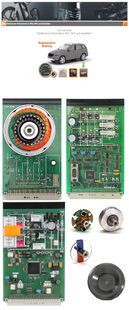Course: Electric drive in cars, commercial vehicles and 2-wheelers

An electric vehicle for the classroom: This UniTrain system offers you the perfect introduction to HV technology and electric drive systems for both automotive and commercial vehicle technology. The course consists of three different modules that depict the structure of an HV system or an electric drive system in an intuitive and easy-to-understand way. A glance at the training system thus immediately reveals the three technical components:
- HV battery with relay and pilot line (nom. voltage: 30V)
- Inverter
- Electric motor (three-phase motor) in asynchronous and synchronous versions
The trainee learns in an absolutely safe learning environment, as the training system only operates in the range of safety extra-low voltage. An electrical hazard is therefore excluded. At the same time, the system offers all functions of a real HV system and thus optimally prepares the trainee for the next level of HV training.
The simple commissioning of the system is accomplished in a few minutes and immediately, together with the e-learning course, the trainee is able to put the HV system into READY mode and start the electric motor. In addition to all important technical topics (HV battery, inverter, synchronous and asynchronous turning machines, recuperation, etc.), the topics of occupational safety and the intrinsic safety of electric and hybrid vehicles are also explained. Numerous animations and pictures support the knowledge transfer just as much as the practical experiments that deepen the theory learned in practice. Finally, all contents are tested via various knowledge tests, so that the level of knowledge of each individual trainee can be worked out. Through the target group-oriented fault simulation, the trainee can enter diagnostics even at this level and gather important basic knowledge for the complex diagnostics on the HV vehicle.
Outstanding features:
- Smart HV relay (SMR) of the HV battery with self-diagnosis function.
- Real relays for HV+, HV- and Precharge
- Self-diagnosis during switch-on and switch-off for faults in a relay (e.g. stuck relay)
- Fully functional pilot line
- Two-stage orange HV service plug
- First contact interrupts the pilot line
- Second contact interrupts the HV voltage
- Practical READY mode
- READY mode analogous to real vehicle
- Switching on the HV system via start button and brake button
- Switching on the ignition via start button
- Optionally switchable: slowed-down switch-on process for optimal analysis
- Extensive HV fault simulation
- 13 different HV faults, e.g. stuck HV relay
- Faults in the control and load circuit of the relays
- Can be switched on and off via the e-learning course
- HV fault display
- Disconnectable HV capacitor
- HV capacitor can be "deactivated" to show the effect of a defective capacitor.
- Discharge process via "Active Discharge" or "Passive Discharge" possible.
- "Active Discharge" function via MOSFET, incl. fault connection and visual display on the "HV Battery" module.
- Safe measurement in the "HV system
- Low-protection voltage
- Measurement at the HV relays
- Measurement in the pilot line
- Measurement of HV+ and HV- incl. switchable HV capacitor
- Fully functional AC/DC inverter
- Generates the three-phase voltage to drive the electric motor
- Optical display of the DC/AC conversion by LEDs
- Adaptation of the inverter frequency
- Real three-phase motor
- Usable as synchronous or asynchronous motor
- Three-phase or star point connection
Scope of delivery
- 1 x "HV battery with HV relay" module
- 1 x "Inverter" module (with DC link, charging circuit for the DC link capacitors and brake chopper)
- 1 x "Electric motor" module (stator with three-phase winding and rotor, starting and operating capacitor, synchronous and asynchronous rotor)
- 1 flywheel mass
- 1 stroboscope lamp
- 10 jumper plugs
- Storage case
- E-learning course with additional virtual instruments
Learning content
- List rules for work safety in HV vehicles
- Explain differences between different drive configurations (serial/parallel hybrid system, mixed hybrids)
- List different operating modes of hybrid drives
- Explain the design and function of electric drives for hybrid vehicles
- Name control components for hybrid drives
- Explain the principle of basic frequency control
- Get to know the tasks of inverters and intermediate circuits
- Getting to know the structure and function of three-phase machines
- Experimental investigation of the operating behaviour of three-phase machines
- Name the components of the electrical system for hybrid vehicles
- Explaining the principle of energy recovery during braking
- Measuring the regenerated voltage during braking processes
- Measuring the voltage conditions at the frequency converter
- Investigation of energy and force flows
- Course duration approx. 16 h